The Most Amazing Swimming Styles and Strokes
Every swimmer has their own style of how they move through the water. Most people cannot say exactly what it is but they can feel different styles in themselves and other swimmers. Though somebody might be quiet good at swimming, their style may require more energy than an efficient swimmer who works less while getting to the other side smoothly. There are many different swimming styles and all of them are important for different areas. Different strokes can also be useful in different situations, if one style does not work than perhaps another will.
The main four techniques are front crawl, backstroke, breaststroke and butterfly.
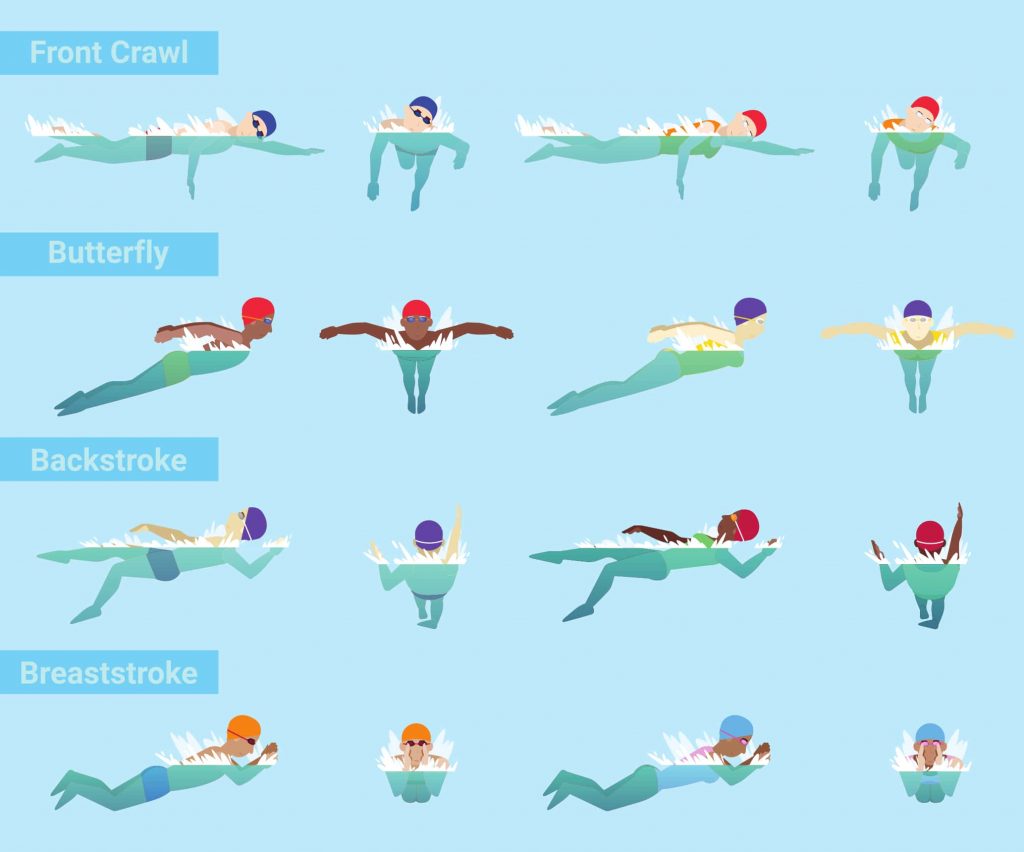

Front Crawl – Front crawl is the most common stroke used by people who swim freestyle. It is done in a lying face down position and the arms move simultaneously with the legs. Front crawl can be swam at different speeds, but they all require an efficient technique to minimize drag. A less pull intensive breathing technique known as “lazy” or “catch up” is used when swimming at slow speeds. The slower speed makes it easier to inhale if the swimmer’s face is in the water during their inhalation. Front crawl can also be swam at high speeds, and requires a very strong core and good coordination to minimize drag. The swimmer needs to keep their hips close to the surface of the water and keep their head facing forward as they move to minimize drag.
There are other styles similar to the front crawl, but they are not always used in competitions. For example backstroke with a six kick per cycle is very much like front crawl only slower. Breaststroke which requires leaving the water at times has similarities to dolphin kicking under water while surfing on top of it .
Front crawl is used in all four swimming styles of competitive swimming, along with backstroke and butterfly. It has been swum for as long as the ancient Greeks who found a way to swim across the English Channel by its use.
Breaststroke – Breaststroke is a style that takes a lot of coordination and flexibility because it is done lying face up on the water and the swimmer needs to be able to stay afloat without sinking. It has three kicks per cycle and four strokes, but unlike other swimming styles it is not always swum using alternating arms and legs. Breaststroke can be swam at different speeds, with a slow speed requiring more strength than a high speed which requires more flexibility. The breaststroke is very tiring on the swimmer because of its alternating arm and leg movement taking more effort than front or back crawl. Breaststroke was not always part of competitions, but it became a test event in 1900 at an international competition.
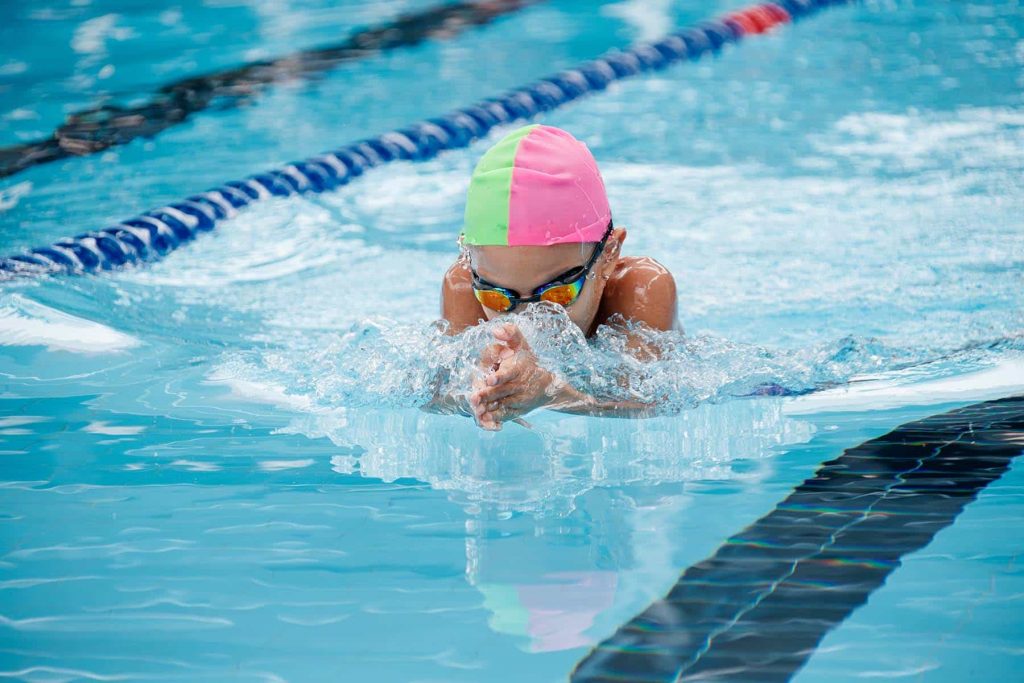

Backstroke – Backstroke is swum on the back with either six or eight kicks per cycle. It is the only style in which the swimmer cannot see where they are going, so it is vital that they do not panic when being unable to find the wall after a turn. Backstroke needs good strength and precision to maintain a certain speed depending on what level of competition it is swum in. Backstroke became part of competitive swimming in the late 1800s, but it was not an Olympic sport until 1904.
Butterfly – Butterfly is swum on the stomach with six kicks per cycle like backstroke. This style requires strong core muscles to lift the legs higher than when front or back crawl are swam. The arms push down on the water as the legs kick up. The high kicks and heavy arm movement make butterfly a very tiring style to swim. Butterfly was originally swum with only one dolphin kick per cycle, but now it is common for there to be three dolphin kicks before a breaststroke pull. Butterfly became an Olympic sport in the 1940s at a time when it was not very popular.
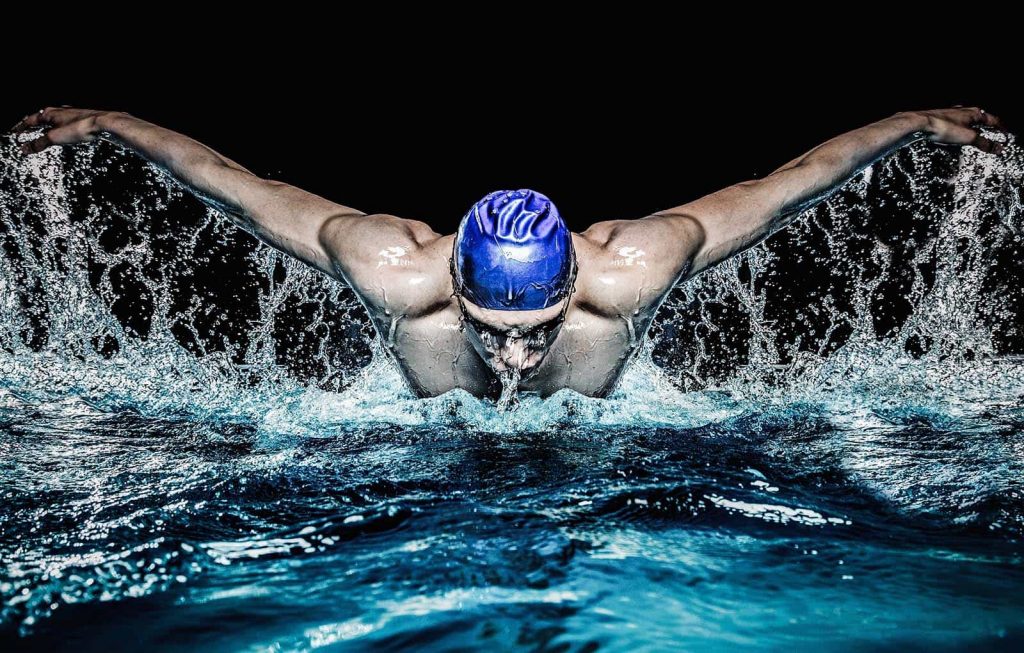
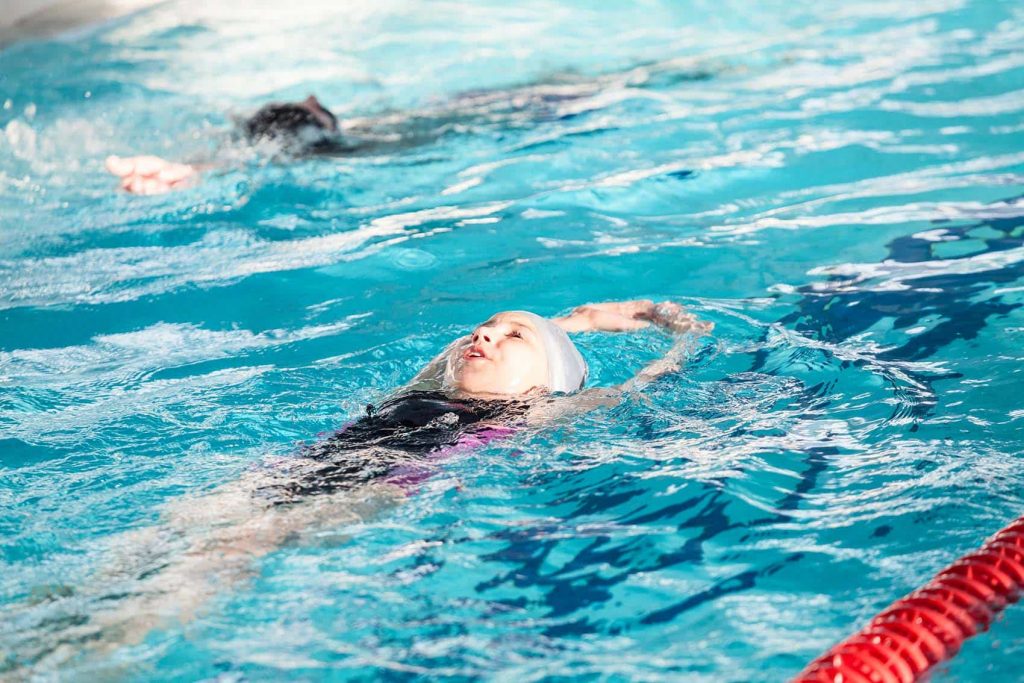
Freestyle – Freestyle is the most common swimming style that people use when they learn to swim because its rules are simple and it can be swam at different speeds while still being a competitive sport. There are no limitations on how a freestyle swimmer must move their arms or legs, which means there are different variations of the freestyle. It is swum on the stomach with either six or eight kicks per cycle depending on how fast it is being swam. Freestyle was originally called “the American crawl” because it was created in America by an athlete who wanted to find a style that could be faster than any other style at the time. Freestyle became part of competitive swimming in the 1860s.
Swimming is an art form that’s easy to learn but hard to master. When observing a swimmer, it becomes apparent that there are different strokes and styles of swimming that can be categorized into three main groups: long-axis strokes, short-axis strokes, and combined strokes.
Long-axis stroke : This type of stroke includes freestyle, butterfly, and backstroke. In this type of stroke the swimmer uses a long smooth undulation similar to but not identical to the movement of an eel.
Long axis strokes are typically faster than short-axis strokes because less friction is created and they use the arms and legs in unison with each other to move forward.

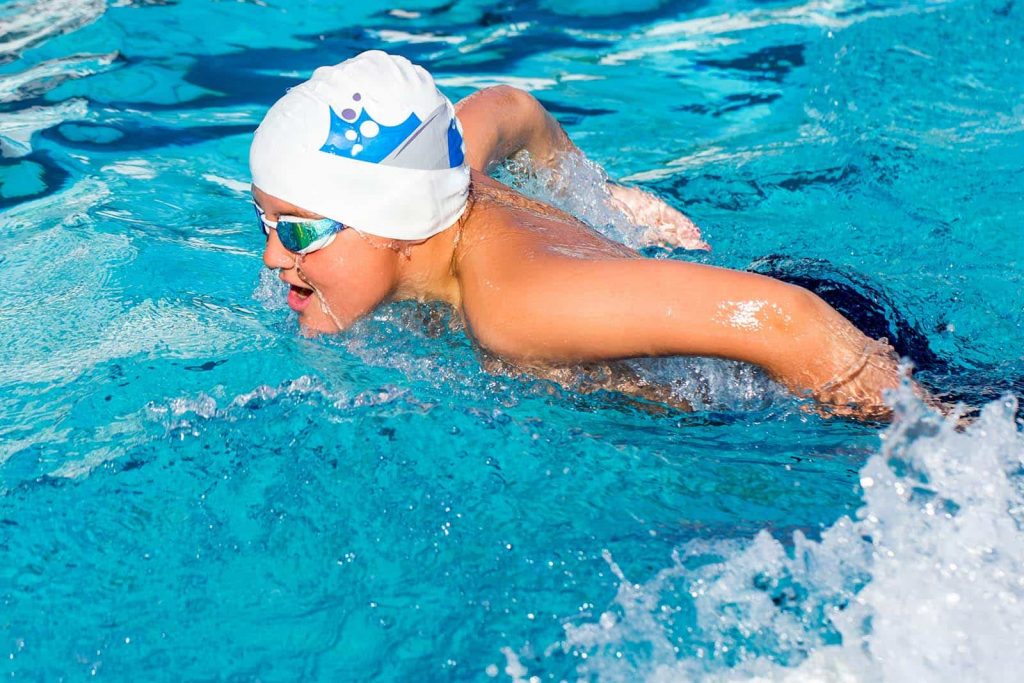
Short-axis stroke : This type of stroke includes breaststroke and sidestroke.
With this style, the swimmer uses a strong hip rotation to provide momentum which engages the upper body in the movement. The swimmer is on their side with one arm extended forward while the other is extended back with fingers towards the feet. The legs follow in unison and tighten to reduce the amount of turbulence created.
Short-axis strokes typically take more time than long-axis strokes because less momentum is created, but it is possible for this stroke to be faster when swimmers can coordinate themselves with each other.
Combined stroke : This type of stroke includes backstroke and butterfly. This style of stroke is a combination of long-axis and short-axis strokes, with the body rotating like in breaststroke, but also using the arms like in freestyle to propel forward. Combined strokes normally alternate between long-axis stokes and short axis stokes making them typically slower than either type of stroke on their own. However, they are typically faster than long-axis and short-axis strokes swum together.

